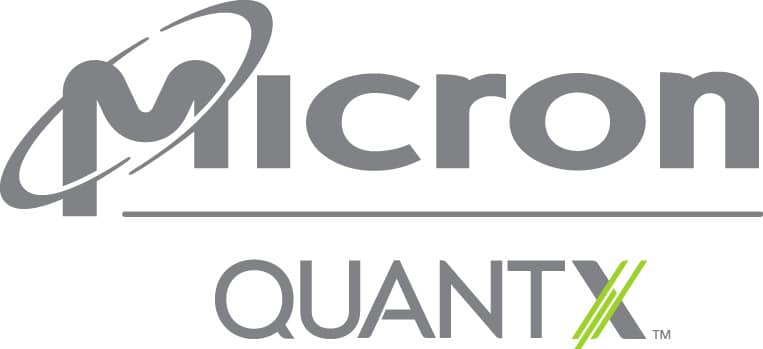 At the Flash Memory Summit in Santa Clara, California, Micron Technology announced its own branded version of the new NAND based off of 3D XPoint, QuantX. This announcement mirrors Intel announcing its own product based off of the same technology, Optane Technology. Micron also released some performance numbers to give the industry a closer look at what XPoint technology is capable of.
At the Flash Memory Summit in Santa Clara, California, Micron Technology announced its own branded version of the new NAND based off of 3D XPoint, QuantX. This announcement mirrors Intel announcing its own product based off of the same technology, Optane Technology. Micron also released some performance numbers to give the industry a closer look at what XPoint technology is capable of.
At the Flash Memory Summit in Santa Clara, California, Micron Technology announced its own branded version of the new NAND based off of 3D XPoint, QuantX. This announcement mirrors Intel announcing its own product based off of the same technology, Optane Technology. Micron also released some performance numbers to give the industry a closer look at what XPoint technology is capable of.

3D XPoint (pronounced cross point) is the result of a decade of research between Micron and Intel. Announced a little over a year ago, 3D XPoint memory will combine the performance, power, density, non-volatility, and costs savings of all the memory technologies that current exist. Initially the two companies claimed that this new technology would have 1,000 times the performance and endurance of current NAND technology while being ten times denser than traditional memory.
Intel announced its version of XPoint, Optane, immediately after and gave a demonstration putting it head to head with one of its drives. While it showed almost six times the performance it wasn’t exactly 1000 times better. Micron has waited over a year to release their version, as they’ve rolled through the progression more slowly. And while they are still keeping most of the details close to the chest they did show some performance numbers, a little more in depth than Intel’s presentation.
Micron compared their QuantX to a current NVMe SSD. The NVMe SSD hit a write latency of less than 200μs and a read latency of less than 100μs. The QuantX was able to hit write latency of less than 20μs and a read latency of less than 10μs. Comparing a NVMe SSD to QuantX in a U.2 form factor, this time in 4k random 70% read 30% write tests, the QuantX drive in capacities that ranged from 200GB to 1.6TB were all able to hit over 900K IOPS while the 1.6TB NVMe SSD hit just over 200K IOPS. Running the same test this time using HHHL form factor gave similar results for the NVMe SSD while the QuantX, again in all capacities, hit over 1.8 million IOPS.
Though in-house, these numbers are quite impressive. However they fall far short of the initial 1,000 times the performance claim. In the companies’ defense the initial claim vaguely pointed out that it was better than “current NAND” without being any more specific. The above demonstration was a comparison between an NVMe SSD versus a more traditional SATA SSD. Micron does state that the 1,000X faster statement is referring to QuantX once it has been packaged into the SSD with existing controller and firmware.
Sign up for the StorageReview newsletter

